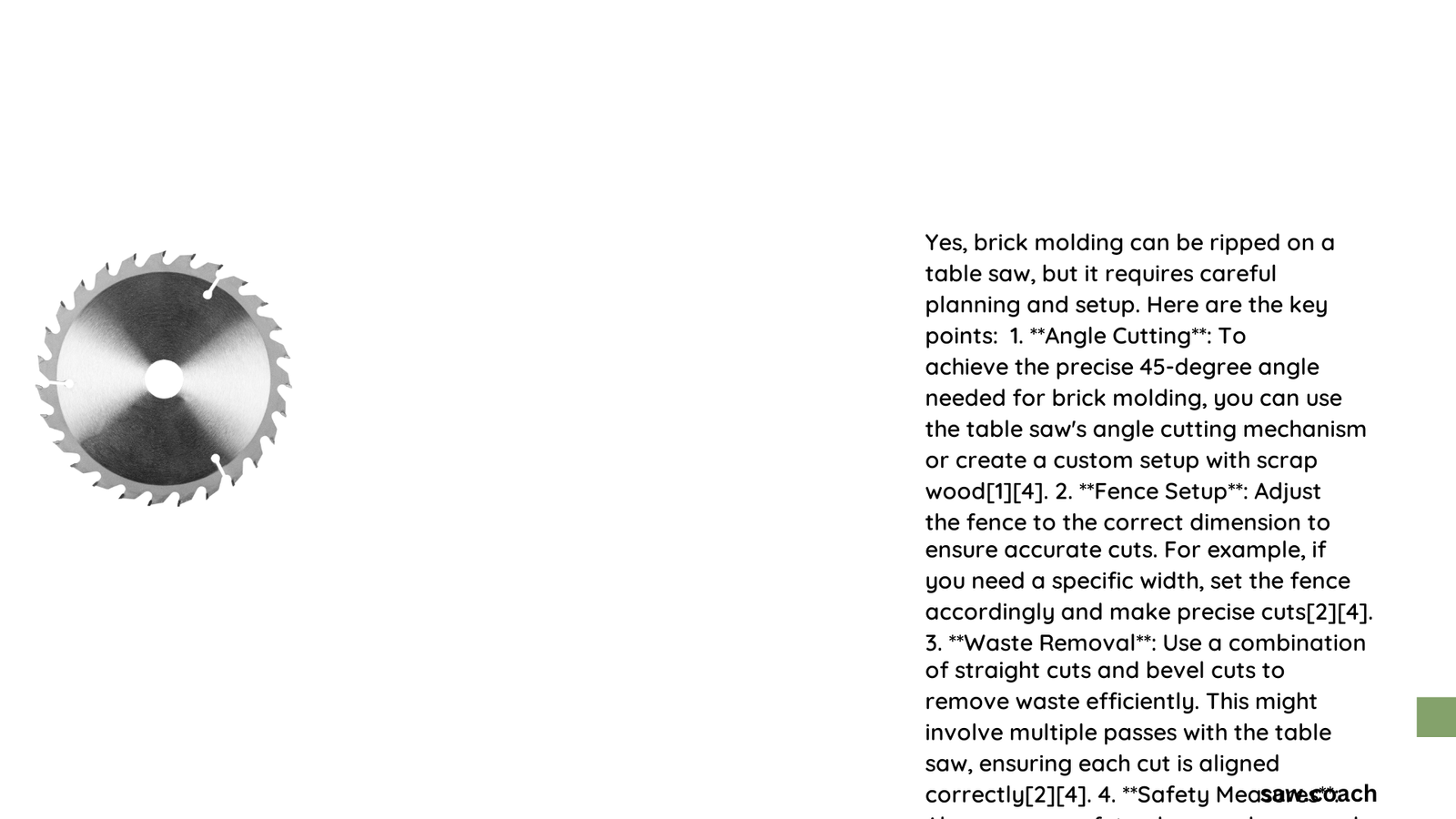Ripping brick molding on a table saw requires specialized knowledge, precise techniques, and careful preparation. Woodworkers can successfully cut brick molding by understanding blade selection, safety protocols, and proper equipment setup. This comprehensive guide explores the nuanced process of transforming brick molding using a table saw, addressing critical considerations for achieving clean, accurate cuts while maintaining workshop safety standards.
What Preparation is Needed Before Ripping Brick Molding?
Successful brick molding ripping begins with meticulous stock preparation and workspace organization. Consider these essential preparatory steps:
Stock Assessment Checklist
| Criteria | Requirement | Purpose |
|---|---|---|
| Wood Flatness | Completely flat surface | Prevents uneven cutting |
| Edge Straightness | Perfectly squared edges | Ensures accurate fence alignment |
| Moisture Content | Kiln-dried or properly seasoned | Prevents warping during cutting |
Critical Pre-Cutting Considerations
- Blade Selection
- Choose carbide-tipped rip blade
- Recommended 24-tooth configuration
-
Ensures aggressive, clean cutting performance
-
Workspace Preparation
- Clear surrounding work area
- Verify table saw alignment
- Check blade height and angle
- Confirm fence parallelism
How Can You Safely Rip Brick Molding?

Safety represents the paramount concern when ripping brick molding. Implement these professional-grade safety protocols:
Personal Protection Requirements
- Wear ANSI-approved safety glasses
- Use hearing protection
- Employ dust mask or respirator
- Avoid loose clothing
- Secure long hair
Technical Safety Mechanisms
- Install blade guard
- Use riving knife
- Maintain push stick proximity
- Establish consistent feed rate
What Blade Configurations Work Best?
Blade selection dramatically influences cutting quality and safety. Consider these professional recommendations:
Ideal Blade Characteristics
- Material: High-carbon steel or carbide-tipped
- Tooth Count: 24 teeth
- Tooth Geometry: Alternate top bevel design
- Cutting Angle: 90-degree standard configuration
What Techniques Ensure Precision?
Precision emerges from methodical technique and controlled movement:
- Gradual Feed Technique
- Move workpiece steadily
- Allow blade to do primary cutting work
- Maintain consistent pressure
-
Avoid sudden movements
-
Support Strategy
- Use infeed/outfeed supports
- Implement roller stands for longer pieces
- Maintain workpiece alignment
What Common Mistakes Should You Avoid?
Woodworkers frequently encounter challenges when ripping brick molding:
- Overlooking blade sharpness
- Ignoring wood grain direction
- Rushing cutting process
- Neglecting safety equipment
- Improper fence alignment
Final Recommendations
Ripping brick molding successfully requires:
– Comprehensive preparation
– Meticulous safety protocols
– Precise equipment setup
– Patient, controlled technique
Pro Tip: Always practice on scrap material before attempting final cuts to refine technique and verify settings.
